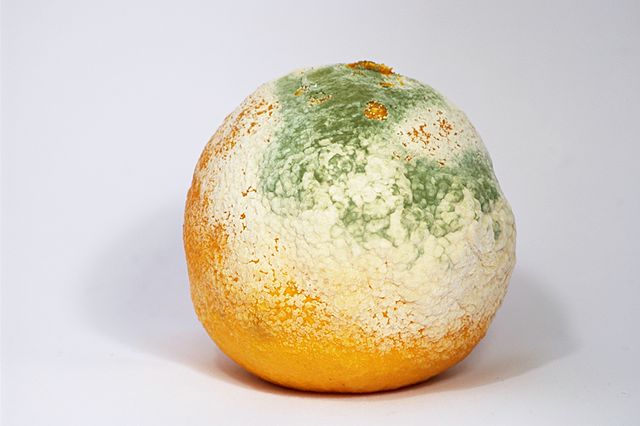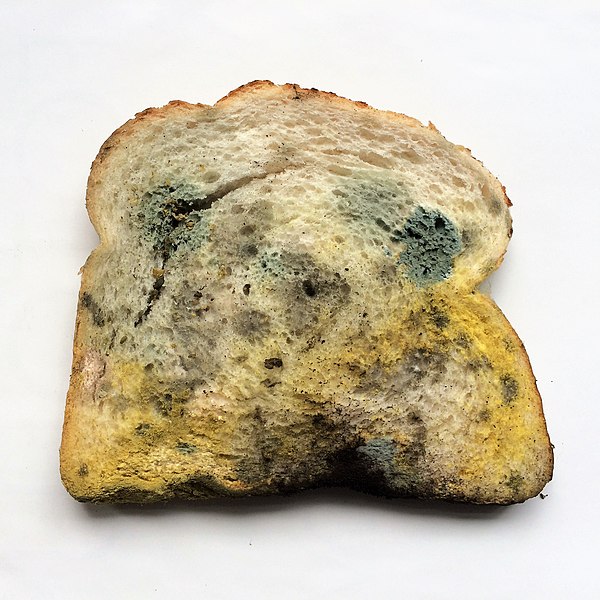Mildew is a form of fungus. It is distinguished from its closely related counterpart, mold, largely by its colour: molds appear in shades of black, blue, red, and green, whereas mildew is white. It appears as a thin, superficial growth consisting of minute hyphae produced especially on living plants or organic matter such as wood, paper or leather. Both mold and mildew produce distinct offensive odours, and both have been identified as the cause of certain human ailments.
Example of downy mildew (left) along with powdery mildew (right) on a grape leaf
Unidentified species of mildew growing on a plastic shower curtain (scale gradations = 1p µm)
A mildew-infected plant
A mold or mould is one of the structures that certain fungi can form. The dust-like, colored appearance of molds is due to the formation of spores containing fungal secondary metabolites. The spores are the dispersal units of the fungi. Not all fungi form molds. Some fungi form mushrooms; others grow as single cells and are called microfungi.
Penicillium mold growing on a clementine
Spinellus fusiger growing on the mushroom Mycena haematopus
Several species of mold growing on a slice of bread.
Mold on dried Hibiscus sabdariffa







